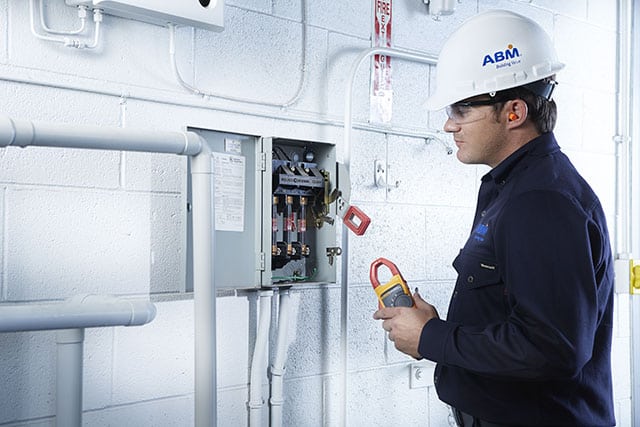From deregulation and restructuring to new technology and globalization, the power industry has undergone dramatic changes over the past few decades. Falling barriers to entry have led to the rise of small and independent power producers, and empowered consumers with choices when it comes to where to purchase their energy.
These changes have transformed a once staid, stable industry into a dynamic market driven by competitive pressures rather than traditional cost of service models. Today’s plant managers and operators must focus on customer service and retention, cost and rate control, and new tools and technology to compete.
To maximize profitability, most modern plants run “lean and mean” when it comes to internal staff and resources. This often means the highly skilled specialists who perform complex reliability maintenance are not included as part of the in-house team—they are often too expensive or too hard to find. Yet, system failure and unplanned downtime and outages can be catastrophic, and North American Electric Reliability Corp. (NERC) and Federal Energy Regulatory Commission (FERC) standards are strictly monitored, with non-compliance resulting in expensive fines and potential liability and litigation. Regular preventive maintenance is a must.
To solve this dilemma, more and more plant managers and operators are turning to third parties to perform their high-level equipment testing and maintenance services. If done right, outsourcing is a strategic way for them to efficiently maximize workforce flexibility and reduce overhead while ensuring compliance and mitigating risk.
Labor Pains
Even if they have the budget for specialized maintenance and testing resources onsite, there is a serious shortage of ready, skilled technical workers in the industry—at the entry and senior level. This twofold issue is caused by an aging and retiring baby boomer workforce and the inability to attract younger workers due to increased competition from the tech sector.
The shrinking skilled labor pool means experienced and knowledgeable technical maintenance workers who have institutional knowledge and know the plants inside and out are in high demand and expensive. Competition is fierce to entice them and keep them busy and happy.
Also, while you can recruit inexperienced people and train them, this can be expensive, and there is no guarantee that, once trained, they will stay. For one thing, maintenance is usually only required monthly or quarterly. Not being able to steadily use their specialized skills can lead to dissatisfaction and loss of expertise, and it opens you up to risk.
The new workforce also tends to not want to stay in one place for long. Often, once trained, they will “chase the money” and leave to work on higher-profile and more exciting projects, such as on pipeline or natural disaster recovery.
The Case for Outsourcing
Knowing these labor challenges, one approach to consider is maintenance outsourcing (Figure 1). In the power industry, it is still often less expensive and more efficient for many generalized tasks to be done in-house. Therefore, what we are really talking about here is “out-tasking,” or contracting out specific services that require a high level of training and expertise as well as specialized technology and tools.
 |
1. Out-tasking. Qualified technicians can be brought in to service plant equipment, add staff during outages, and keep facilities compliant. Courtesy: ABM Industries |
Partnering with a qualified vendor to fill the skilled labor gap offers several benefits for plant managers and operators. The most significant is the ability to perform consistent, state-of-the-art maintenance of critical power systems, which improves reliability and quality, prevents unexpected failures and outages, and ultimately enhances customer service and competitiveness.
Other notable advantages include the ability to:
- Access Immediate Expertise. Qualified and certified technicians are hard to find. Outsourcing means drawing from a larger talent pool that can offer instant access to the expertise and specialized knowledge needed for complex power generation equipment testing and maintenance.
- Reduce Overheard. It’s expensive to recruit, hire, and manage skilled specialists. They also often require in-depth training, and specific tools and equipment. Outsourcing frees up costly human resources overhead and reduces capital expenses. More time and effort can be spent on improving the business.
- Increase Regulatory Compliance. Industry regulations are in place to increase system reliability and prevent catastrophic blackouts and downtime. Meeting NERC, FERC, InterNational Electrical Testing Association (NETA), and other industry standards is vital to eliminate fines and other liabilities, keep customers happy, and remain competitive. A qualified outsourcing partner will handle all the activities—testing, maintenance, recordkeeping, auditing, and more—to maintain regulatory compliance.
- Mitigate Risk. With the complexity of power systems and the ever-changing technology associated with the equipment, ensuring an in-house technician who only performs certain tasks a few times a year is up to speed can be difficult. It’s a huge liability if the job is done incorrectly or a mistake is made. Outsourcing the work reduces your exposure. The vendor assumes the burden of risk, ensuring they have a vested interest in providing properly trained and certified resources and that work is performed according to regulation.
- Stretch In-House Maintenance. Increasing efficiency and doing more with less is what most plant managers and operators are facing today. Handing over complex and specialized services to an outside vendor is more efficient and allows them to focus their limited in-house resources on core functions that improve and grow the business.
Tips for Finding the Right Outsourcing Partner
The key to getting the most value from outsourcing is finding the right vendor. Just like choosing a doctor, you want to do your research and select one that specializes in your industry and is qualified to fulfill your target goals and needs.
Since the right partner can make or break your outsourcing experience, here are some things you might want to consider:
- Credentials. Check the company background of your potential outsourcing partner. This will give you a good idea of its experience, stability, credibility, and qualifications. You can also ask for experience and qualifications of the management team, project managers, and other team members.
- References. Ask for case studies and references to establish a proven track record of success.
- Trusted Consultant. The right partner will have a history of working collaboratively with clients, helping them plan, develop, and implement a customized outsourcing strategy.
- Certifications and Accreditation. A qualified partner should have accreditation from independent standards organizations such as NETA. This proves the high qualifications of the company and their technicians, and that they are dedicated to world standards in testing, analysis, and maintenance of electrical power systems. The company should also employ only degreed and certified technicians.
- Customized Solutions. One size does not fit all. Your partner should do a thorough analysis of your site and maintenance needs and then tailor an outsourcing solution that best fits your goals and budget.
- Product Agnostic. Vendors who are product agnostic are more likely to offer an independent and non-biased assessments and service when it comes to maintaining power generation equipment and systems.
- Flexibility and Scalability. An important characteristic of a provider is its willingness and ability to adapt to growing and changing client needs and demands.
- Continuous Training. Technicians should be highly trained to ensure the strictest standards of quality are upheld. They should also acquire regular, ongoing education to stay abreast of developments in technology, equipment, and best practices.
- Best Practice Methodology and Cutting-Edge Technology. Make sure your potential partner has a technology-enabled workforce and best practice methodologies to provide the highest levels of efficiency, safety, and customer service.
- Single Point of Contact. Having a partner that offers a single point of contact for all communications and easy accessibility can be key to a successful and productive partnership.
—Frank Ceci is a vice president of operations and Van D. Wilkins Jr. is a national accounts manager at ABM Industries (www.abm.com).










